Subnetting Review
To identify subnets, you will “borrow” bits from the host ID portion of the IP address:
- The number of subnets available depends on the number of bits borrowed.
–The available number of subnets = 2s, I which s is the number of bits borrowed.
- The number of hosts per subnet available depends upon the number of host ID bits not borrowed.
–The available number of hosts per subnet = 2h -2, in which h is the number of host bits not borrowed.
–One address is reserved as the network address.
–One address is reserved as the broadcast address.
Possible Subnets and Hosts for a Class C Network

Possible Subnets and Hosts for a Class B Network

Possible Subnets and Hosts for a Class A Network

Subnetting Review Exercise
Subnet a network with a private network address of 172.16.0.0./16 so that it provides 100 subnets and maximizes the number of host addresses for each subnet.
- How many bits will need to be borrowed?
- What is the new subnet mask?
- What are the first four subnets?
- What are the range of host addresses for the four subnets?
What Is a Variable-Length Subnet Mask?
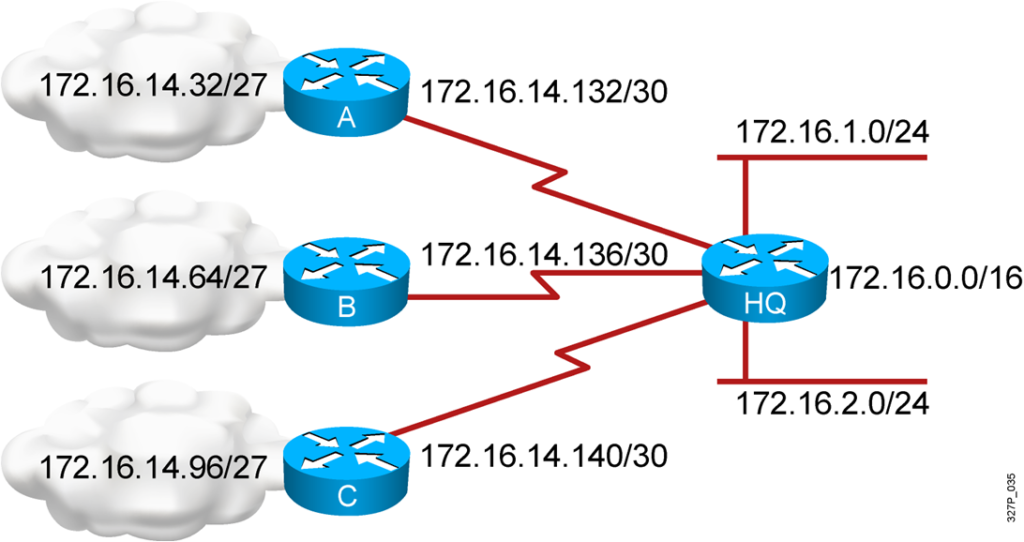
Subnet 172.16.14.0/24 is divided into smaller subnets.
–Subnet with one mask (/27).
–Then further subnet one of the unused /27 subnets into multiple /30 subnets.
A Working VLSM Example
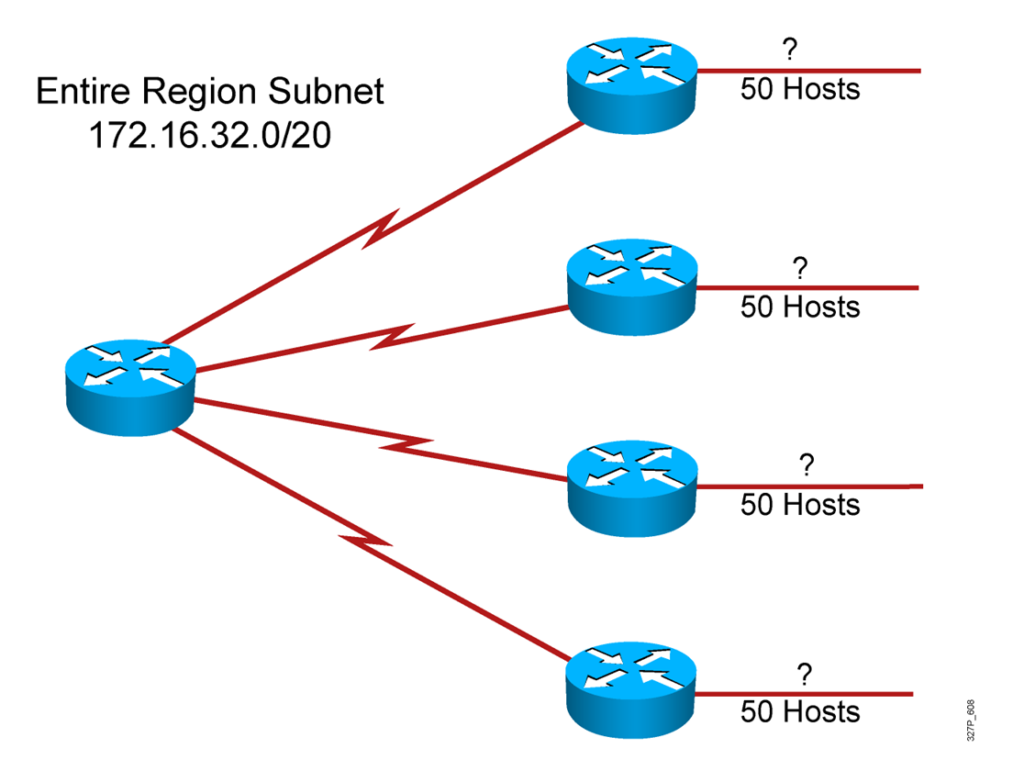
A Working VLSM Example (Cont.)
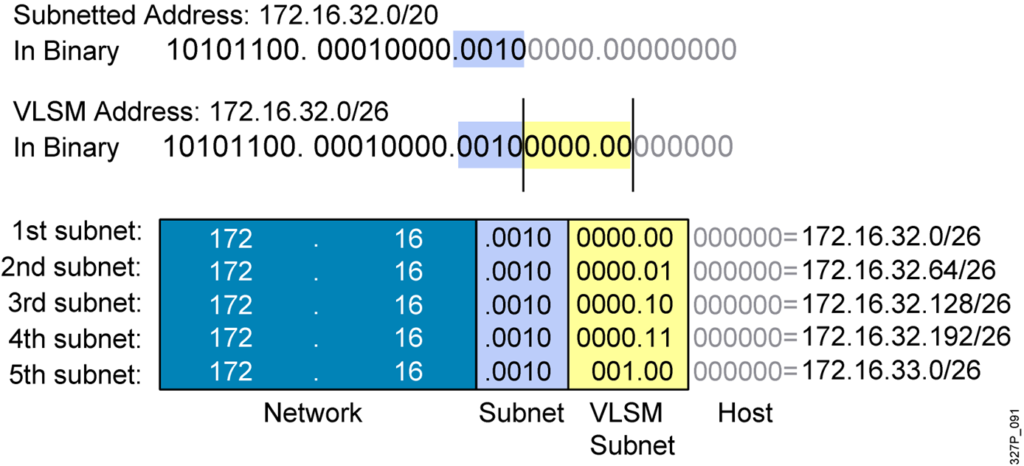
A Working VLSM Example (Cont.)
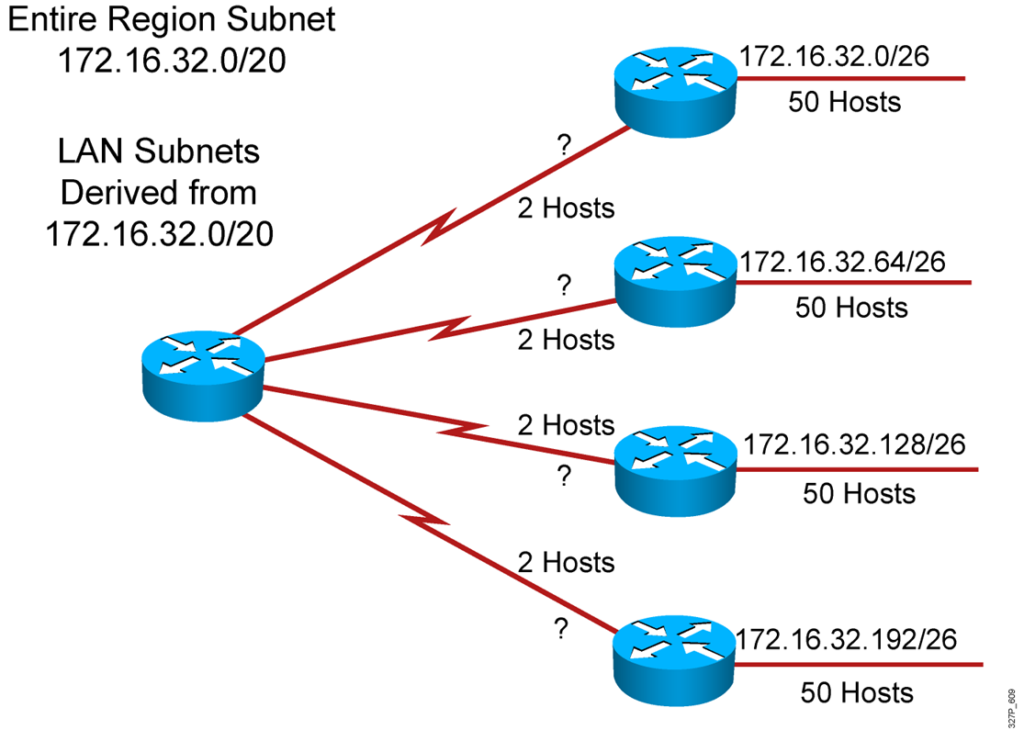
A Working VLSM Example (Cont.)
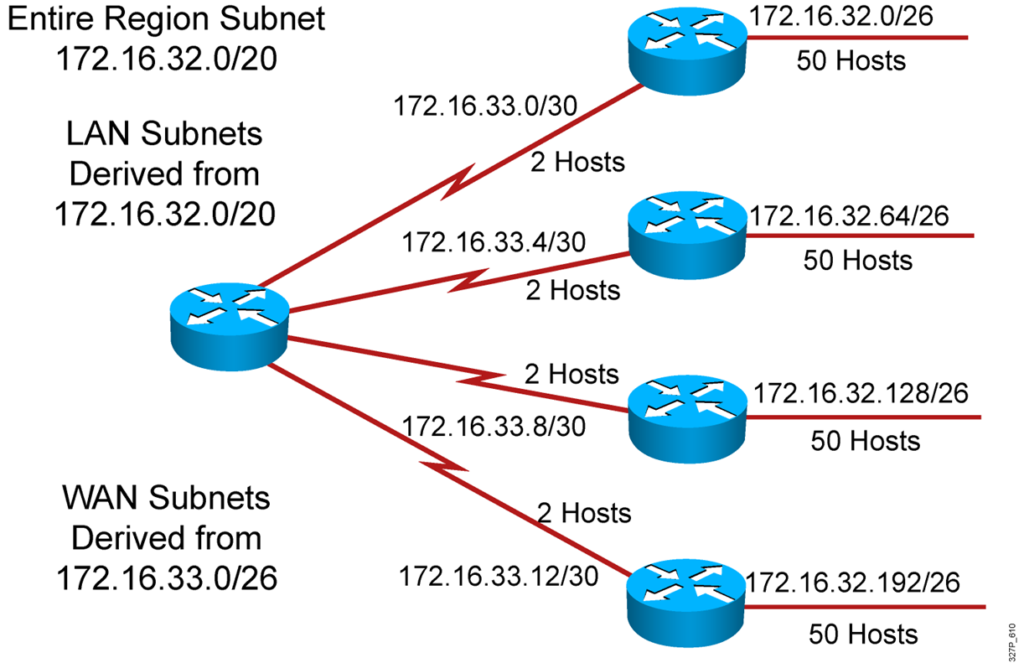
Understanding Route Summarization
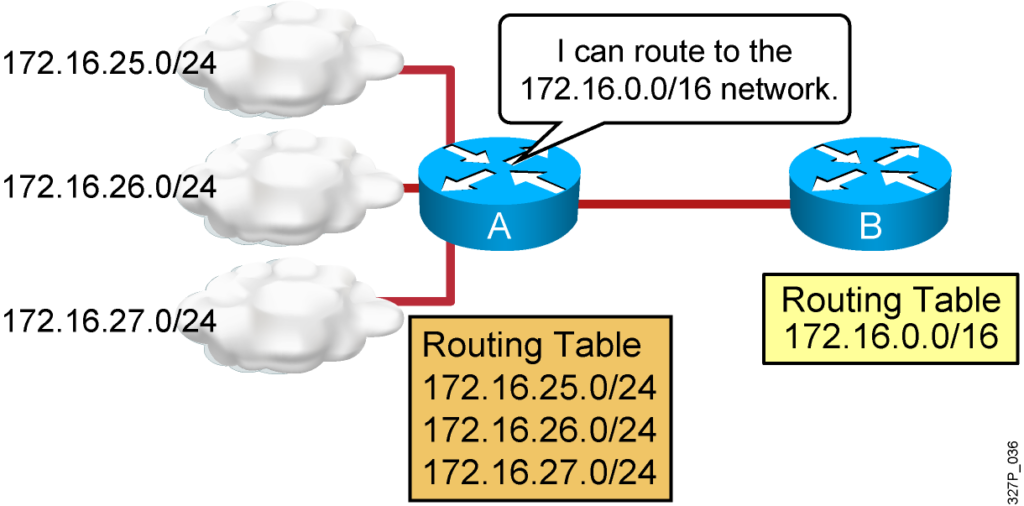
Routing protocols can summarize addresses of several networks into one address.
Classful Routing Overview
- Classful routing protocols do not include the subnet mask with the network in the routing advertisement.
- Within the same network, consistency of the subnet masks is assumed, one subnet mask for the entire network.
- Summary routes are exchanged between foreign networks.
- Examples of classful routing protocols include:
–RIPv1
–IGRP
Note: Classful routing protocols are legacy routing protocols typically used to address compatibility issues. RIP version 1 and Interior Gateway Routing Protocol (IGRP) are introduced to provide examples.
Classless Routing Overview
- Classless routing protocols include the subnet mask with the network in the advertisement.
- Classless routing protocols support VLSM; one network can have multiple masks.
- Summary routes must be manually controlled within the network.
- Examples of classless routing protocols include:
–RIPv2
–EIGRP
–OSPF
- RIPv2 and EIGRP act classful by default, and summary routes are exchanged between foreign networks.
–The no auto-summary command forces these protocols to behave as if they are classless.
Summarizing Within an Octet
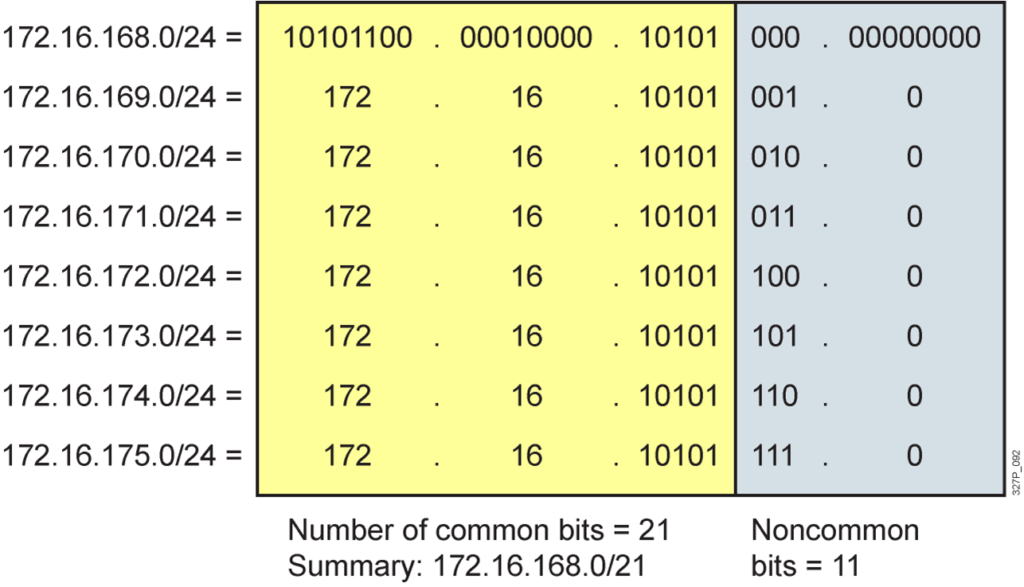
<h3
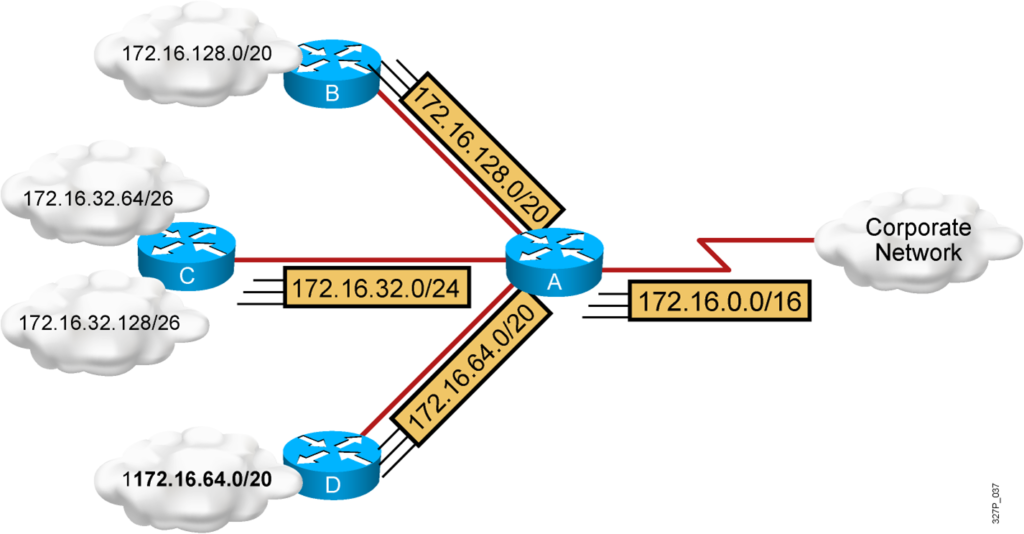
Route Summarization Operation in Cisco Routers

- Supports host-specific routes, blocks of networks,
and default routes - Routers use longest prefix match
Summarizing Routes in a Discontiguous Network
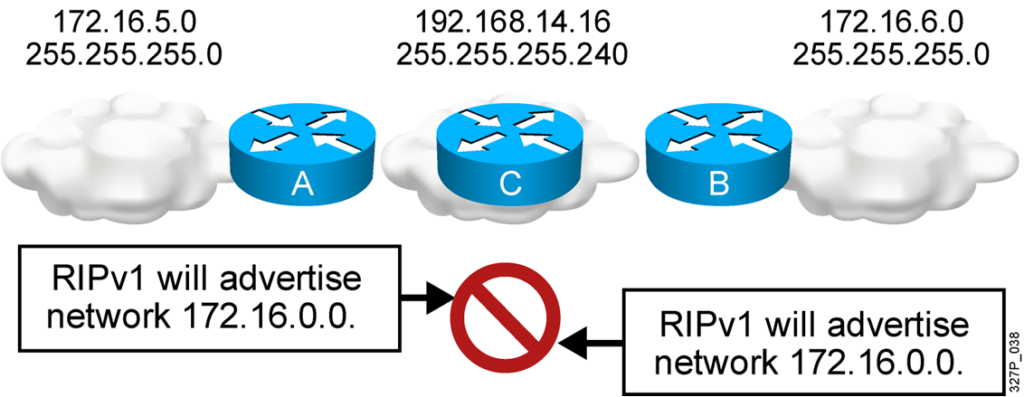
- Classful RIPv1 and IGRP do not advertise subnets, and therefore cannot support discontiguous subnets.
- Classless OSPF, EIGRP, and RIPv2 can advertise subnets, and therefore can support discontiguous subnets.
Summary
– Subnetting lets you efficiently allocate addresses by taking one large broadcast domain and breaking it up into smaller more manageable broadcast domains.
– VLSMs let you more efficiently allocate IP addresses by adding multiple layers of the addressing hierarchy.
– The benefits of route summarization include smaller routing tables and the ability to isolate topology changes.
